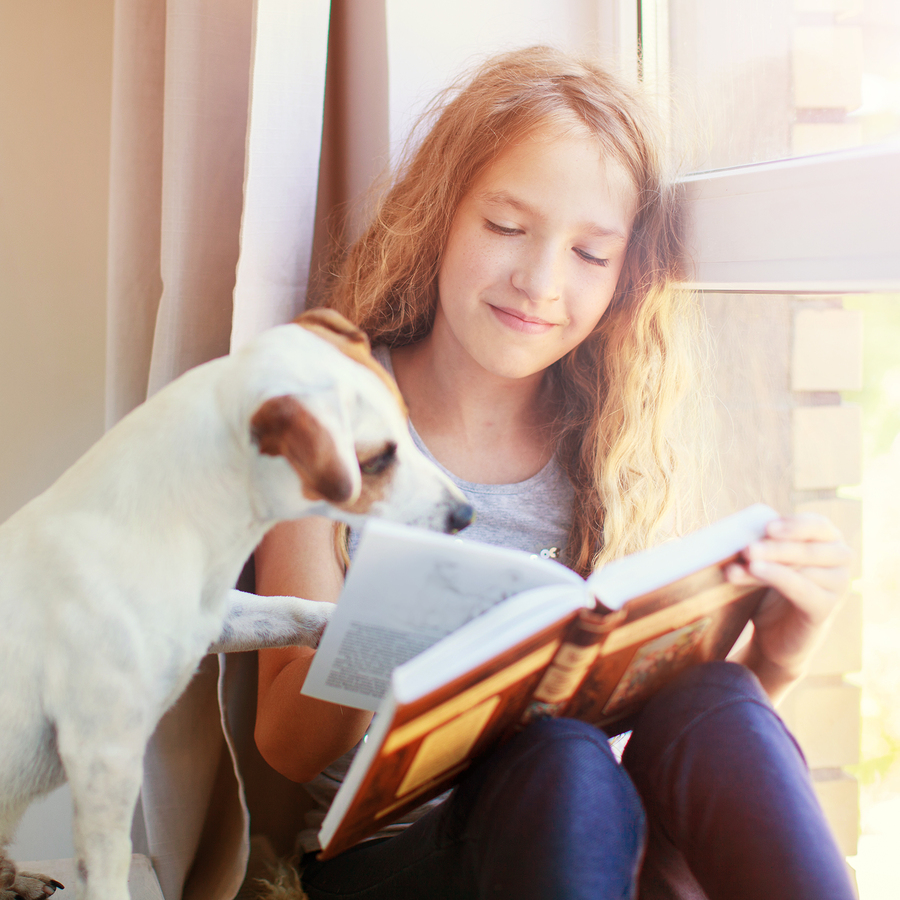With social distancing and stay-at-home orders across most of the country during the coronavirus pandemic, school and library “Read to a Dog” programs that boost children’s literacy are temporarily on hold.
But there’s an innovative way for kids to still benefit from reading to nonjudgmental listeners: reading to their own pets at home.
The nonprofit therapy animal organization Pet Partners recently launched a virtual reading program called “We Are All Ears.” It provides free online resources such as reading logs, bookmark templates, and book-themed BINGO cards, and encourages students of all ages to read whatever they like to their pets for 15 minutes at a specific time each day.
Elisabeth Van Every, communications and outreach coordinator at Pet Partners, said the goal is to provide an enriching experience for both kids and pets of all kinds, including bunnies, fish, and lizards.
“There are studies that show the benefits that reading to animals can have for kids – they improve literacy rates overall,” she says. “The animals are just there to listen. They’re not going to judge how well a child is reading, what their pronunciation is like, if they’re following the text well enough. They’re just going to sit or lie there happily and let the kid pet them and show them the pictures.”
Meanwhile, pets benefit from receiving attention in a calm, structured way. It also helps provide the comfort of a routine. Van Every says her own dog, Fezzik, seems confused now that she’s working from home; she’s looking at a computer screen instead of showering him with constant attention, as she used to do when she came home from work.
To set pets and kids up for success, she suggests finding a comfortable spot for both reader and animal. Offer a favorite toy or treat to keep the pet engaged. Encourage the reader to pause from time to time to pet the animal.
“While reading is the primary focus, you still want to make sure the animal is getting some attention. So pet them, scratch their ears, engage with them in a way that they enjoy periodically during the reading to make sure that everybody is still connected and enjoying it,” she says, adding, “You can always give your pet a treat at the end of the reading session, which will help reinforce that this is a fun thing.”
Van Every says she is scheduling virtual reading times with children of friends who don’t currently have pets. She’ll point the camera at Fezzik or one of her cats, Kaga and Squish, while the child reads to the pet from a different home.
Parents can also make it special for kids by posting photos of their children reading to pets on social media with #WeAreAllEars or tagging Pet Partners.
Utah resident Heather Dillon shared a photo of her first grader, Connor, reading to their dog, Moonshine. She said it’s a fun way for kids to set and reach goals while spending time with a furry best friend.
“I can say with confidence my son’s reading has greatly improved since we’ve been out of school doing this program. He went from reading beginner books (levels 1-2) to reading multiple large chapter books. His passion for reading has taken off and we couldn’t be more thrilled!”
For more information, visit https://petpartners.org/allears/
This article was reviewed/edited by board-certified veterinary behaviorist Dr. Kenneth Martin and/or veterinary technician specialist in behavior Debbie Martin, LVT.
Award-winning journalist Jen Reeder is former president of the Dog Writers Association of America.








